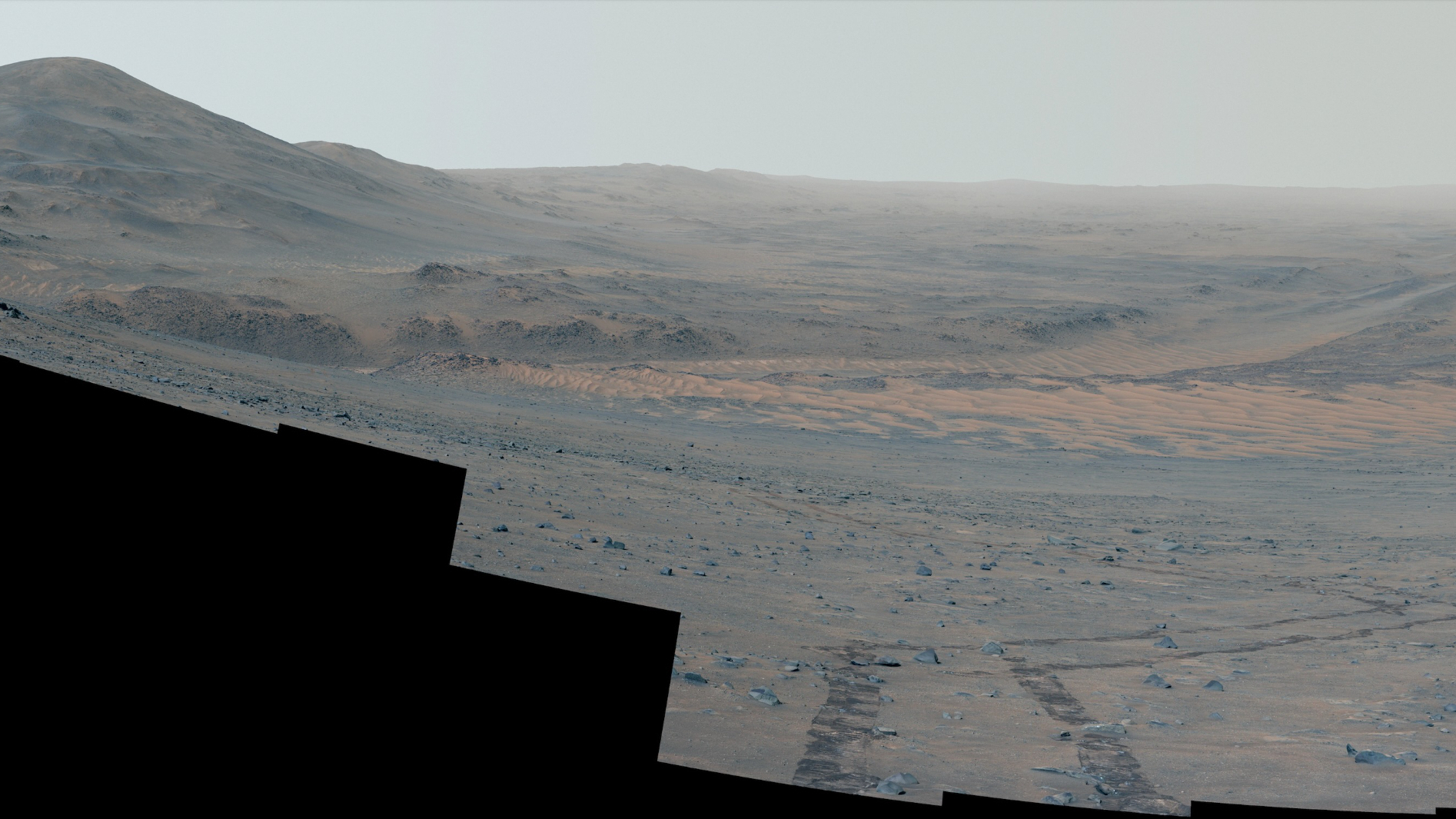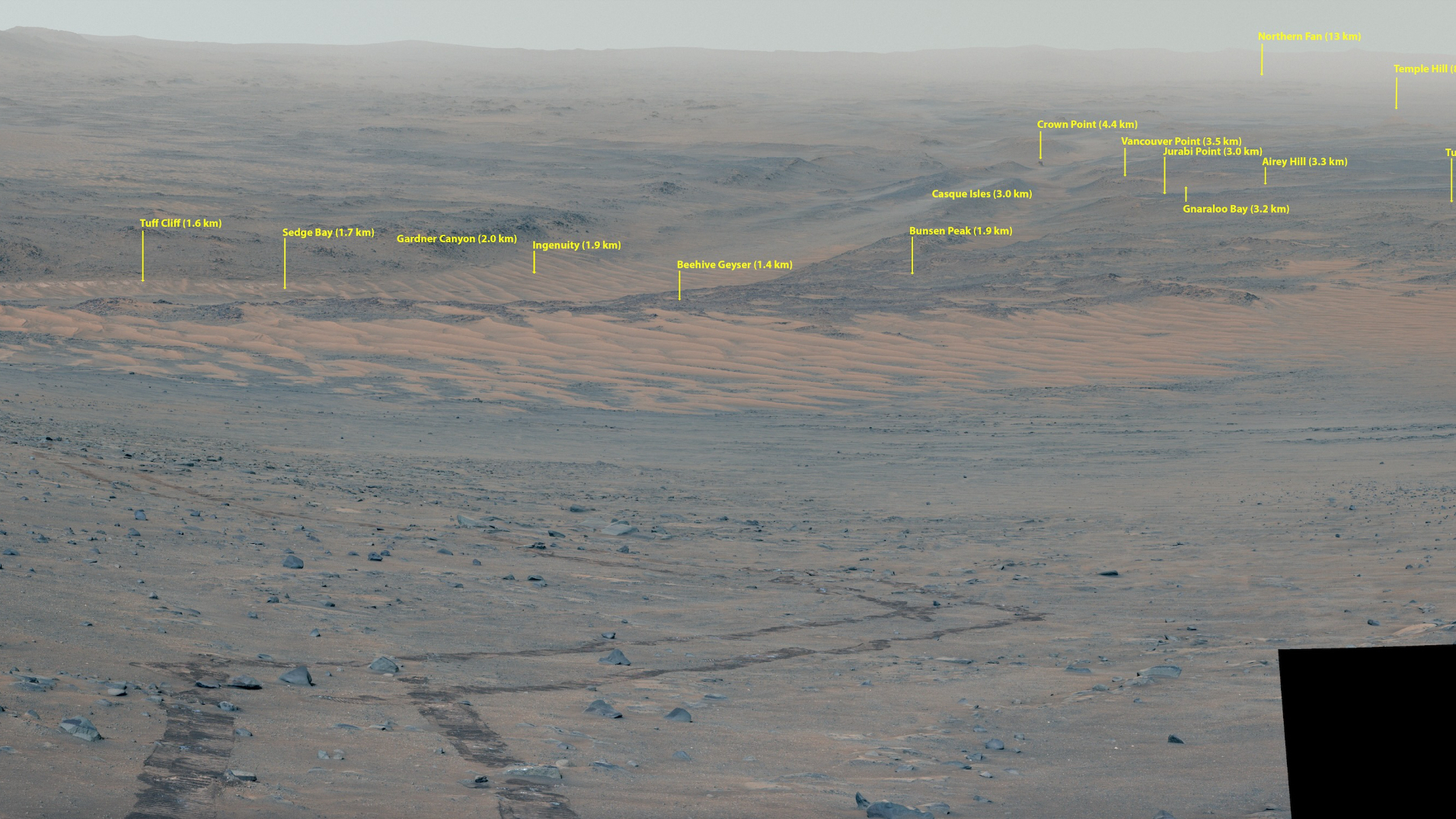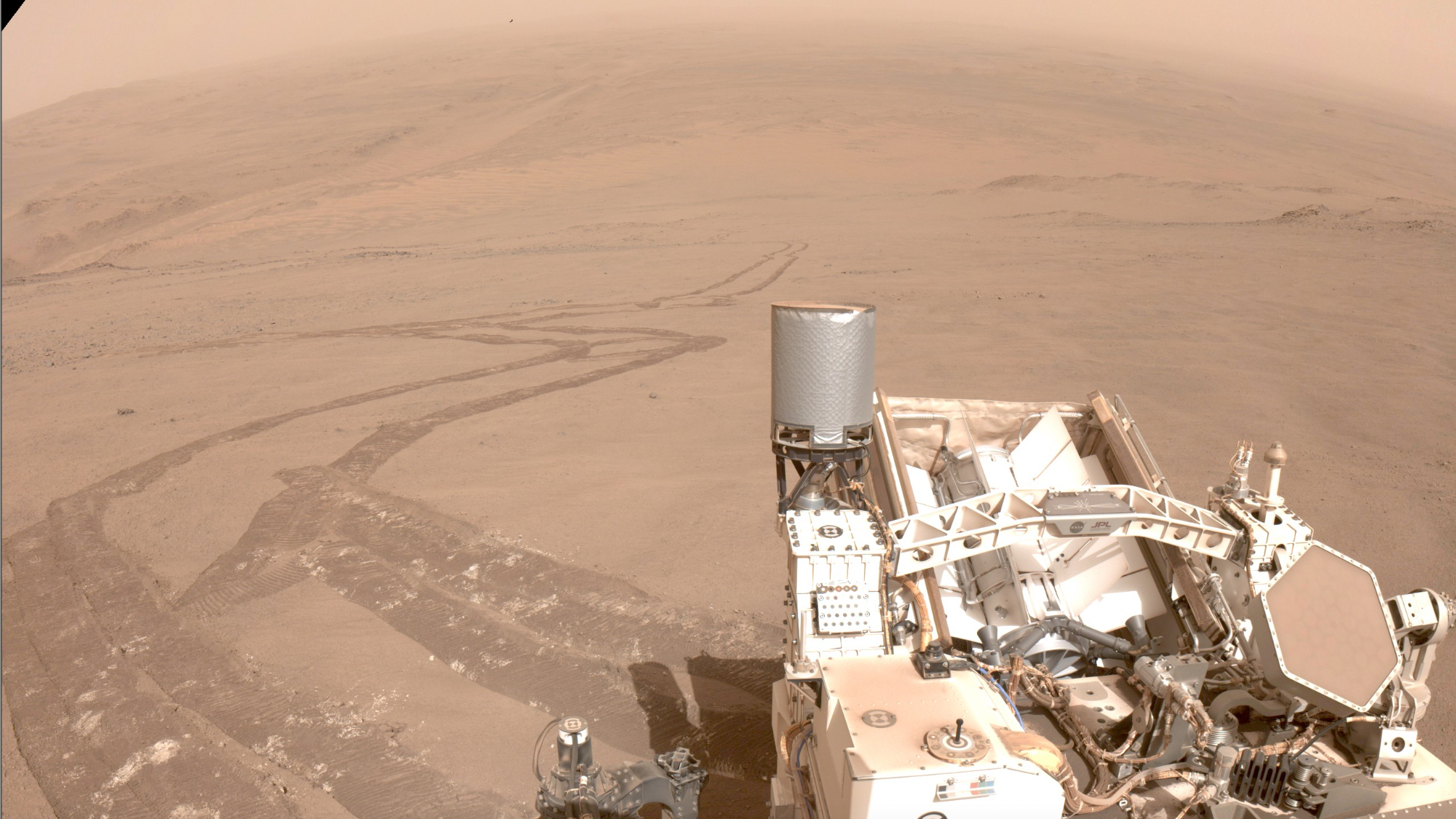NASA's Perseverance rover took a break from its Mars mountaineering expedition recently to survey its old stomping grounds.
The car-sized Perseverance landed on the floor of the 28-mile-wide (45-kilometer-wide) Jezero Crater in February 2021 to hunt for signs of past Mars life and collect dozens of samples for future return to Earth.
Perseverance has finished its work in Jezero's flats and is now scaling the crater's western rim, on its way to explore new and disparate Mars landscapes. Late last month, however, the rover paused to take in the grand Jezero view — and to share that vista with its handlers on Earth.

Mission team members stitched together 44 photos that Perseverance snapped on Sept. 27, creating a mosaic that features many of the landmarks the rover has explored.
"The image not only shows our past and present, but also shows the biggest challenge to getting where we want to be in the future," Perseverance's deputy project manager, Rick Welch of NASA's Jet Propulsion Laboratory (JPL) in Southern California, said in a statement on Monday (Oct. 28), when NASA shared the new imagery.
"If you look at the right side of the mosaic, you begin to get an idea what we're dealing with," he added. "Mars didn't want to make it easy for anyone to get to the top of this ridge."
Perseverance began the climb in mid-August. It took the featured photos when it was about halfway up the western rim, near a spot the mission team calls "Faraway Rock." The rover isn't expected to crest the rim until early December, however, because the going is pretty tough.
Get the Space.com Newsletter
Breaking space news, the latest updates on rocket launches, skywatching events and more!
The ridge that Welch referenced has a slope of about 20 degrees, NASA officials said. It's also slippery, featuring loose sand and dust atop a brittle crust.

"Mars rovers have driven over steeper terrain, and they've driven over more slippery terrain, but this is the first time one had to handle both — and on this scale," Camden Miller of JPL, a planner, or "driver," for Perseverance's mission, said in the same statement.
"For every two steps forward Perseverance takes, we were taking at least one step back," added Miller, who also served as a driver for NASA's Curiosity rover, which landed inside Mars' Gale Crater in 2012 and is still going strong. "The rover planners saw this was trending toward a long, hard slog, so we got together to think up some options."

Those options included driving the six-wheeled Perseverance backwards, taking a switchback-heavy "cross-slope" approach, and staying close to the slope's northern edges, which may have more large, traction-enhancing rocks buried in the near subsurface.
All three of these strategies have helped to some extent, but the northern-edge method appears to provide the most bang for the buck, so the rover team is going to prioritize that one.
"That's the plan right now, but we may have to change things up the road," Miller said. "No Mars rover mission has tried to climb up a mountain this big this fast. The science team wants to get to the top of the crater rim as soon as possible because of the scientific opportunities up there. It's up to us rover planners to figure out a way to get them there."
Join our Space Forums to keep talking space on the latest missions, night sky and more! And if you have a news tip, correction or comment, let us know at: community@space.com.

Michael Wall is a Senior Space Writer with Space.com and joined the team in 2010. He primarily covers exoplanets, spaceflight and military space, but has been known to dabble in the space art beat. His book about the search for alien life, "Out There," was published on Nov. 13, 2018. Before becoming a science writer, Michael worked as a herpetologist and wildlife biologist. He has a Ph.D. in evolutionary biology from the University of Sydney, Australia, a bachelor's degree from the University of Arizona, and a graduate certificate in science writing from the University of California, Santa Cruz. To find out what his latest project is, you can follow Michael on Twitter.
-
Rob77 Love seeing these images from the red planet, especially the intricacies of the Rover design.Reply
The colour chart on the body is interesting, i'm speculating it's a visual indicator on UV stability of ink/paint on Mars? -
24launch Reply
@Rob77, the color charts are for white balance / color calibration for the images.Rob77 said:Love seeing these images from the red planet, especially the intricacies of the Rover design.
The colour chart on the body is interesting, i'm speculating it's a visual indicator on UV stability of ink/paint on Mars?
I love seeing these photos too! Living in Arizona *many* look like the deserts here, but many look more like they could be in places like Northern Africa, like the one in this article.
I remember as a child I would get the big NASA photo books from the college library (I was still in elementary school) and just scour over the then ONLY photos we had of the surface from the Viking landers. Just trying to imagine what it would look like to be standing there.
Now we get these amazing photos including blue sunsets and shots of Earth in the evening/morning skies.
Not surprisingly one of my fav books and movies is The Martian! -
MHF A NASA man commented on the panorama claiming, "If you look at the right side of the mosaic, you begin to get an idea what we're dealing with," he added. "Mars didn't want to make it easy for anyone to get to the top of this ridge." And yet the picture shows the LEFT side of the crater wall MUCH steeper than the right wall. What gives?Reply








